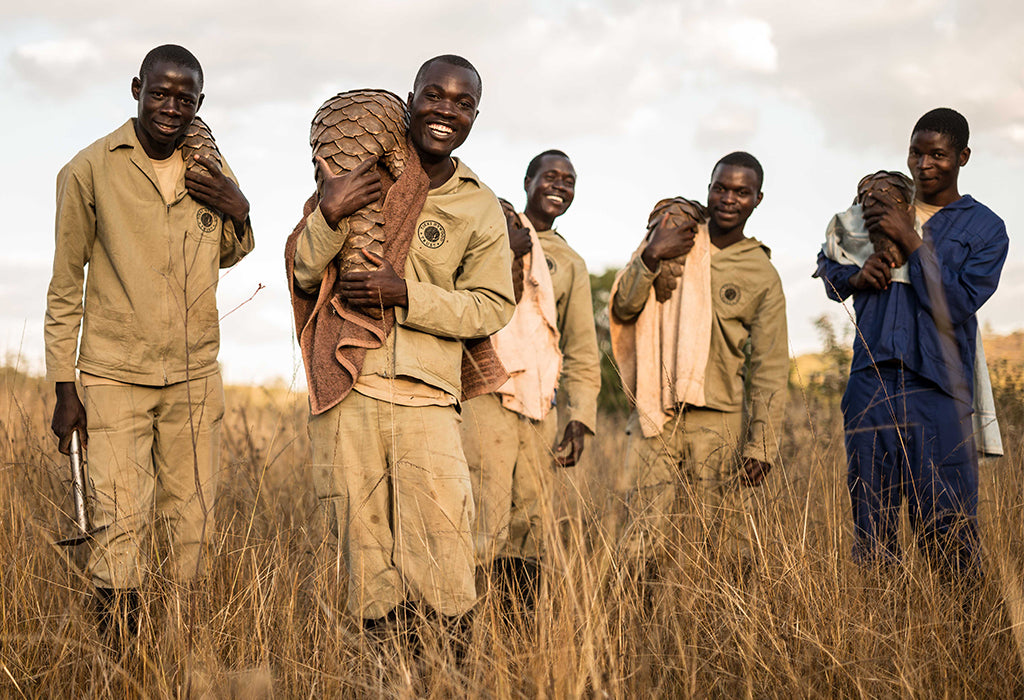
"Pangolin men" at Tikki Hywood Foundation. Photo by Adrian Steirn. Courtesy of Tikki Hywood Foundation.
This Small, Armored Creature is the Most Poached Animal in Africa
More than 1 million pangolins have disappeared over the last decade. Lisa Hywood and her Tikki Hywood Foundation are fighting for their future in the wild, one creature at a time.
Enigmatic and shy, the scaly pangolin is a prehistoric animal native to Africa and Asia. Being predominantly nocturnal, it probably won’t lumber out to greet you on your next safari, but it has another reason to hide. The pangolin is hunted because its scales are made of keratin, falsely believed by some cultures to have medicinal value—like rhino horn.
One of its fiercest defenders is Lisa Hywood, the CEO of the Zimbabwe-based Tikki Hywood Foundation. For nearly two decades, she and her team of pangolin minders work tirelessly to rescue, rehabilitate, and release animals stolen by poachers back into the wild, conservation work they have been doing for over two decades. Their work was recently featured in “Pangolin Men,” the photographic series by photographer Adrian Steirn (which was also covered in a short documentary). Here, she lays out what these curious and vulnerable creatures are up against.
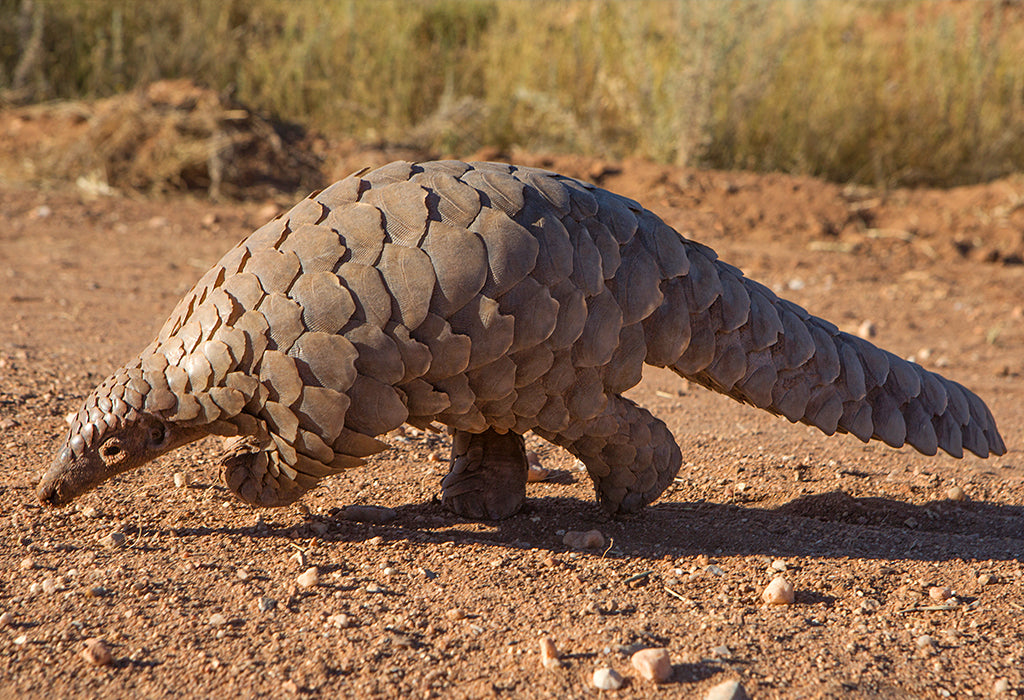
Tell us more about this unusual animal! Is it related to the armadillo?
The pangolin is a member of a family of Asian and African toothless mammals—there are eight species in total—whose body is covered with large overlapping horny scales. It’s existed on earth for 80 million years! The only relation to other animals, including the armadillo, is their diet—mainly ants and termites—which they eat with their long sticky tongues. Pangolins’ scales essentially grow out from the skin bed and are pure compressed keratin, just like fingernails—and, more importantly, exactly like rhino horn. Armadillos, on the other hand, are covered in bony plates, which are protected with a layer of toughened skin.
What are the biggest threats to pangolins’ survival?
The biggest threat is the demand for pangolin products, predominantly in China and Vietnam. The scales are used in Traditional Chinese Medicine, although scientifically none of these cures have been proven to work, and the meat is seen as a delicacy. In Africa you’ve got Muti, which is also a form of traditional medicine, but it’s on a smaller scale. In western central Africa people eat them; this is part of the bushmeat trade. The upsurge in poaching could be related to population growth, be it in Africa or in China. A hundred years ago, you may only have had 100 people eating pangolin; today you might have 1,000 people eating it.
More than 1 million pangolins were poached in the last decade. How many are left?
Unfortunately, due to the nature of their habitats and natural habits—they are shy and nocturnal—it is almost impossible to do any kind of census or count. But they are very vulnerable to harm, because when threatened they curl into a ball and are easy to poach.
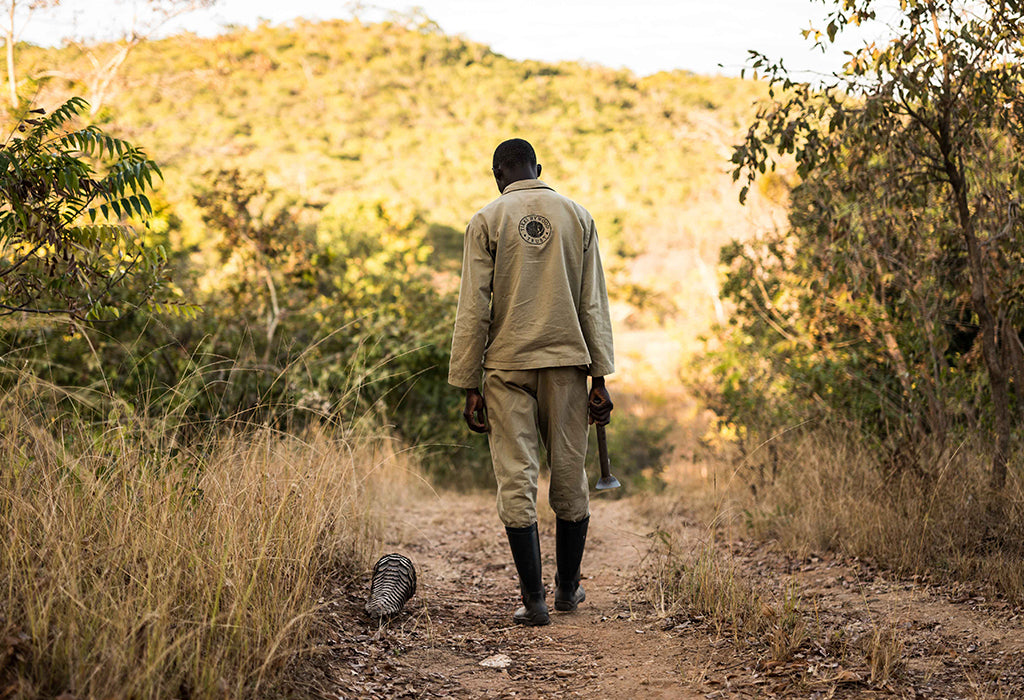
Photo by Adrian Steirn. Courtesy of Tikki Hywood Foundation.
What are the most critical ways in which your organization is protecting pangolins?
Our work in Zimbabwe involves the rescue, rehabilitation, and release of pangolin back into the wild. We work with chiefs in their tribal areas to create a better understanding of the need to protect their species. And we offer a place that the authorities can reach out to when a pangolin is rescued, a safe place where it can be accessed and treated. Originally our work was just based in Zimbabwe; however, due to our experience and success rate working with rescued pangolin, we are also working with organizations and authorities throughout Africa. We believe that changing legislation is key to the survival of the species. We lobbied for the pangolin to be uplifted to CITES Appendix 1, in 2016, the highest protection for a species from international legal trade. A higher CITES listing also by proxy invites higher protection in some African states, since their wildlife laws rely heavily on CITES regulations.
How does the rescuing and rehabilitation work?
We receive a call from the authorities, which means they have retrieved a pangolin. Depending on the nature of the injuries, either it will remain in care in one of our facilities, or it will be released as soon as possible into a protected and safe area. We never know how many pangolins will come in; we have instances where we haven’t received any for a couple of weeks, and another when there were 9 rescued in a week.
"Just because you’re smaller or less charismatic, why should your survival be less important than that of an elephant or a cheetah or a rhino?"
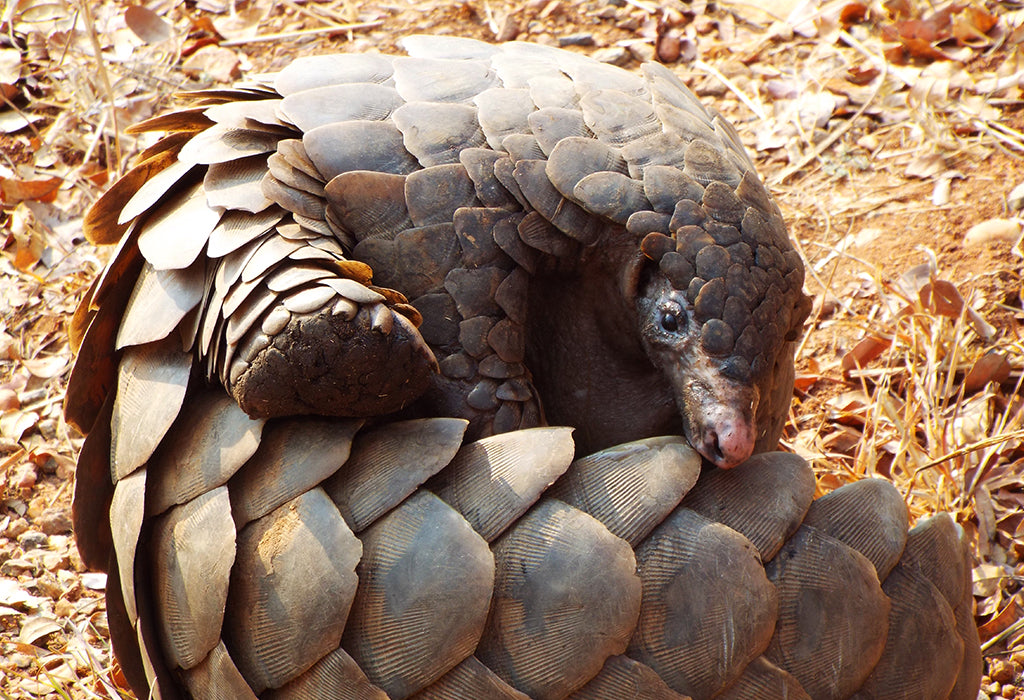
At what point can you release a pangolin back into the wild?
It depends on the compromised state of pangolin when it comes in. Some have been with us for 15 to 18 months, and we’ve had to hand-raise them. Some have come in and been badly beaten. One was with us for nearly three years, because when he arrived he’d been hit across his head with a machete, and his brain was showing and his eye was hanging out and we didn’t know if he would make it, or whether he was brain-damaged. But Makhosini (“Little Prince”) did very well—he was very young when he came in, probably in his first year of life—and he was released back to the wild after three years of rehabilitation.
Tell us more about the pangolin minders, who were featured in Adrian Steirn’s “Pangolin Men.”
Every single day they go out and help these animals regain strength and forage with them. Their role is to get the animals fit enough to go back into the wild again. We have 21 pangolin minders in Zimbabwe. They come from all over the country. Some of them barely speak English when they arrive. It’s a process for them to learn about the pangolin. All the guys have families and extended families they have to support. As of last February, the total number of people our Zimbabwe project supported was 108.
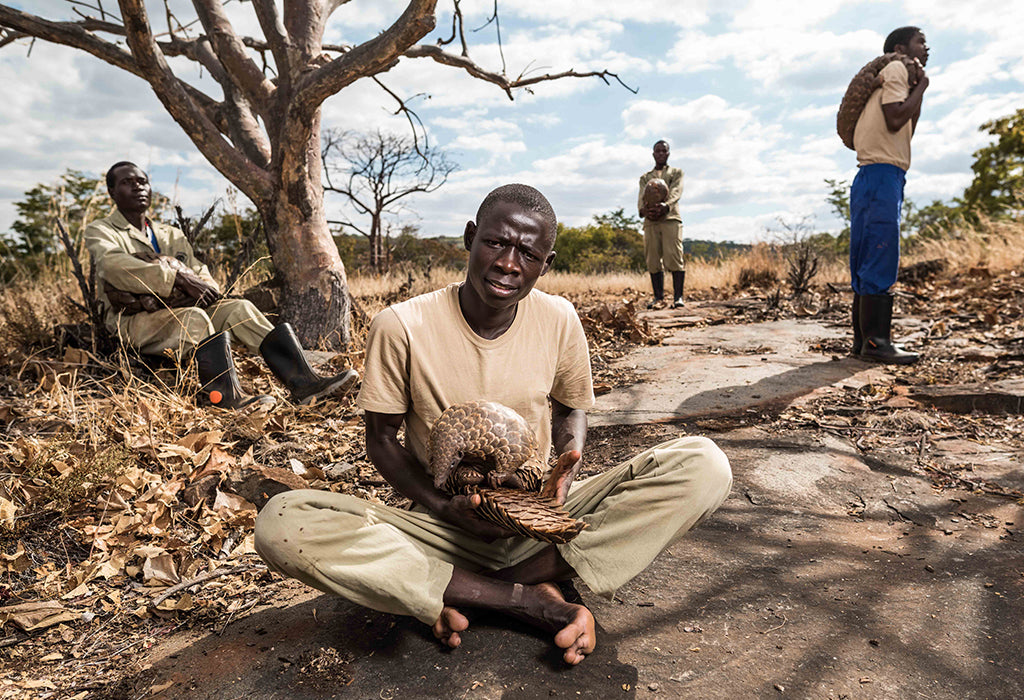
Photo by Adrian Steirn. Courtesy of Tikki Hywood Foundation.
How did you come to work in conservation?
Growing up in Zimbabwe, my parents loved taking me into the bush and we spent a lot of time in nature. So, it was inherent from the very beginning. I lost my father when I was away doing my tertiary studies in Europe, and I came back to Zimbabwe wanting to do something in his memory. At the time, in 1992, Zimbabwe was going through one of our worst-ever droughts, so in lieu of flowers at his funeral we decided to put money into a conservation effort. A few months later, I came back after working with Clem Coetzee, the original mastermind of elephant family herd relocation, with whom I’d helped move 689 elephants. Back in 1992-3, no one had ever done something like that. Clem convinced me we needed a Zimbabwean to champion Zimbabwean issues, and 18 months later the Tikki Hywood Foundation, named after my father, was officially launched.
So how did you get from saving elephants to pangolins and other less-heralded species?
I wanted to support animals that really needed protection and in Zimbabwe, elephants are not threatened—in fact, we have an overpopulation. What surprised me was that most people didn’t know anything about the rarest animals that were facing extinction here. I wanted to support the underdogs, so to speak. Just because you’re smaller or less charismatic, why should your survival be less important than that of an elephant or a cheetah or a rhino? I chose pangolin as a logo, because I wanted to honor my father’s memory. In our Shona culture in Zimbabwe, we believe pangolins are sacred animals and can only be given to a chief if found in the bush; it is the highest honor. My father was my chief. I always say I think pangolins chose me more than I chose them.
You’ve saved more than 220 pangolins now. It’s striking that these creatures are so small, and your gains incremental—one animal at a time. Where do you find the patience to keep chipping away at this issue?
Because every single one counts.






